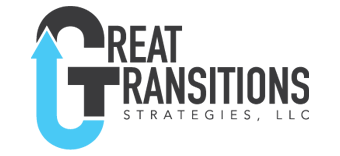“I wanted the position so badly; a fortune 50 tech company, working with a highly visible team that was well funded, and they recruited me. I missed some big red flags that I was misaligned with the culture of the organization. What could I have done differently?”
In reality you could have done quite a bit in the search phase. Think of these three areas:
- Defining your cultural box
- Be a student and educator
- Prototyping yourself
Cultural Box
A cultural box sets your boundaries. It defines those areas that are out of alignment with your values. Here is an example. You are competitive, work hard, and put extra time when needed. For you, a boundary is crossed when competition pits team members against each other and becomes cutthroat with team members focused on individual recognition. Now you find yourself in this exact environment. Every day you have a pit in your stomach when you go to work. How do you prevent this from happening?
When you begin your search for a new position, identify and define your values. Those elements that are personally most important to you. In the example, teamwork is a top value. You define it as ensuring success of the team over individual success. Any behavior not fulfilling your definition will be a negative trigger. More frequent or extreme behavior creates more dissonance and misalignment.
Recommendation:
Define your cultural box by taking these two actions:
- Identify your values and 2) define them with the behavior you expect to have that value fulfilled.
List your top five values with definitions. You now know what you are looking for in an organization.
In your search ask questions, watch behavior, and look for signs of alignment with your values.
Student and Educator
Be a student of the organization and position you are targeting. It takes time to fully understand the details and nuances of an organization and position. Challenge your first impressions. Be a student of what reality is to work every day in that desired position.
Additionally, be an educator to those courting you. Educate them on what makes you a fit and drives your performance. Think of this as dating the organization. In your search do your research about the big organization and the smaller team you will be working with. Look for opportunities to share and educate your potential new team on what is important to you. It is important they understand the conditions that allow you to contribute and thrive.
Prototyping
This is a concept to test yourself and your assumptions in conversations and experiences. The concept is articulated well in this video by the Stanford Life Design Lab. Have conversations with individuals who are in a similar position or the organization you want to join. In those conversations explore what it would be like to be in their seat. After all they are in the position.
Build a good question bank that will reveal what you are looking for. Then listen and see if you hear your values reflected in the answers.
Here are a few of my favorite questions:
- How is success measured here?
- How does this organization develop its people?
- What does it look like when individuals disagree with the leadership?
- What have been the reasons for people leaving this organization/team?
Prototype experiences, creating possibilities to test if an organization, team, position, or role is a good fit. Be creative. A prototype experience may take the form of an internship, a half day shadowing a colleague, attending a workshop, eating lunch on site, creating or finding a volunteer opportunity. For some organizations such as hospitals volunteering is easy and provides incredible insights. The goal is to get as close to replicating a position or experience you are pursuing.
Summary
Often when searching for opportunities we focus on “selling” ourselves. We try to convince or show the decision maker how we are the perfect fit. This is a different perspective.
This is understanding the shape of our puzzle piece and deliberately finding where it fits best.



